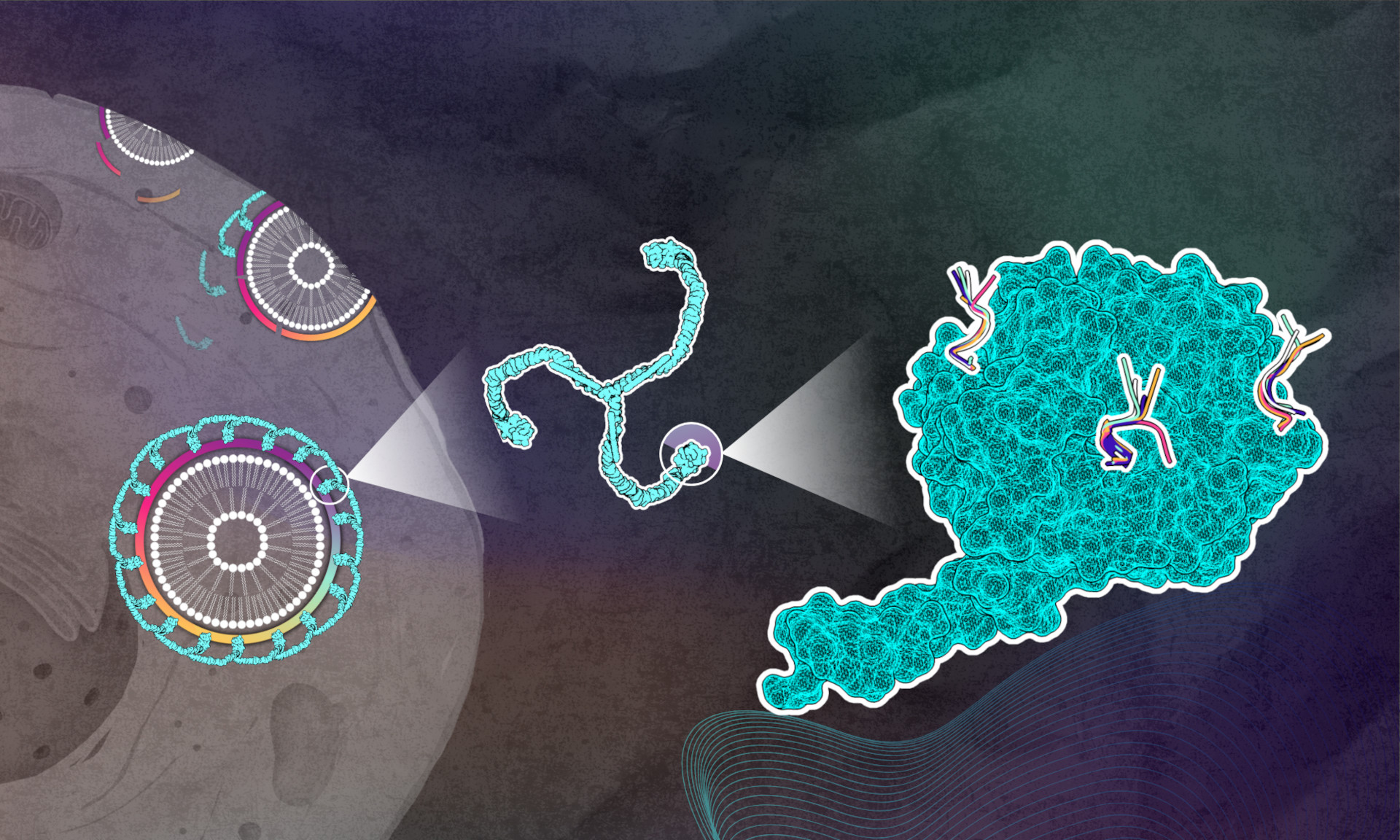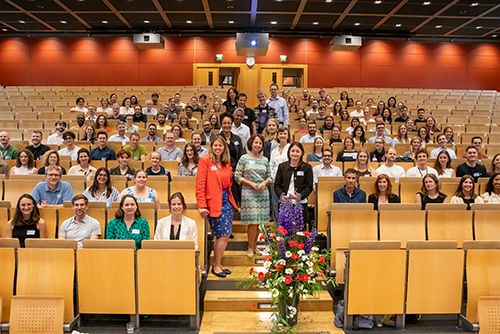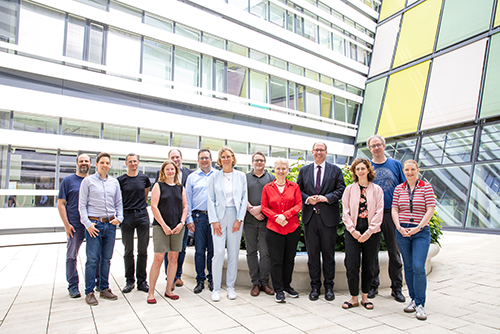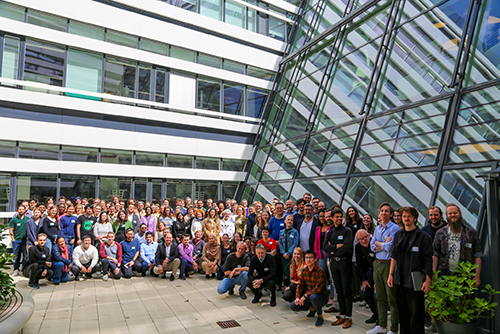Picky Proteins: understanding yeast adaptor protein selectivity
Scientists from CSSB and EMBL reveal key insights into the cellular process of clathrin-mediated endocytosis. Their findings were published in the scientific journal Nature Communications.
The cellular membrane controls the passage of substances in and out of the cell. Some larger cargo wishing to enter the cell, such as membrane proteins, nutrients and pathogens, do so via a process known as clathrin-medidiated endocytosis.
To gain a deeper understanding of this important cellular process, the researchers in the Garcia-Alai Team (EMBL) in collaboration with the Uetrecht Group (UzL, DESY) employed a combination of integrative biophysical and structural approaches together with in vivo functional experiments to take a closer look at the interactions between the protein clathrin and various adaptor proteins.

During clathrin-mediated endocytosis, adaptor proteins bind to the cell membrane and to the protein clathrin, which assist in engulfing the cargo in a clathrin-coated vesicle.
“The cargo is essentially sucked into the cell during clathrin-mediated endocytosis. The process is actually quite speedy; everything takes between 60s and 120s from the recruitment of the early adaptor proteins to the membrane and the excision of a vesicle”, explains the study’s first author Lucas Defelipe.
The clathrin protein itself has a three-legged shape and forms cages of different sizes to coat vesicles. At the end of each “clathrin leg” there is the N-terminal domain (NTD) that interacts with adaptor proteins, linking this scaffold to the cellular membrane. Each NTD has three to four adaptor protein binding sites know as boxes.
To comprehend the role of these boxes in clathrin-mediated endocytois, the researchers needed to find out whether these NTD boxes have developed target-specific binding capabilities.
The clathrin heavy chain’s (Chc) N-terminal domain bound to peptides from specific adaptor proteins were examined using X-ray crystallography. “All our structures show that each peptide binds to three different binding pockets known as Clathrin box, Arrestin box and W-box,” explains the study’s corresponding author Maria Garcia-Alai. “In fact, all the peptides were able to adapt to fit into each of these boxes by adopting different conformations.”
Next, the researchers wanted to understand whether the adaptor proteins have preference for the different boxes. Are they competing with each other to bind to a specific box? To understand the selectivity of adaptors for clathrin the group conducted several native mass spectrometry (MS) competition experiments. “These experiments revealed that adaptor protein Ent5 is the strongest binder to all NTD boxes, and more importantly showed that the adaptor proteins Ent1 and Ent2 do in fact have binding preferences,” notes CSSB Group Leader Charlotte Uetrecht, whose group specializes in conducting native MS experiments.
To observe Ent1 and Ent2 preferences in the cellular context, the Garcia-Alia group performed experiments at CSSB’s Advanced Fluorescence and Light Microscopy (ALFM) Facility. As clathrin-mediated endocytosis is such a fast process, the scientists used an inhibitor to slow-down the proteins. They tagged Ent1 and Ent2 with fluorescent proteins and then conducted FRET experiments, which report on the close spatial proximity of proteins, to observe their interactions with clathrin’s NTD boxes. “Our results indicate a preferential binding of Ent1 to the Clathrin box and of Ent2 to the Arrestin box,” notes ALFM Facility Head Roland Thuenauer, “we also noticed that Ent1 demonstrates a stronger interaction with clathrin.”
“As Ent1 and Ent2 were previously thought to be functionally redundant, these results are very exciting,” states Defelipe. “Ent1’s stronger bond with clathrin also helps explaining its functional divergence towards actin binding. Overall, we have shown that adaptor protein selectivity and its competitive binding of clathrin results in functional specialization.”
Original Publication:
Defelipe, L., Veith, K., Burastero, O., Kupriianova, T., Bento, I., Skruzny, M., Kölbel, K., Uetrecht, C., Thuenauer, R., & Garcia-Alai, M. M. (2024). Subtleties in Clathrin Heavy Chain Binding Boxes provide selectivity among Adaptor Proteins of Budding Yeast. Nature Communications



